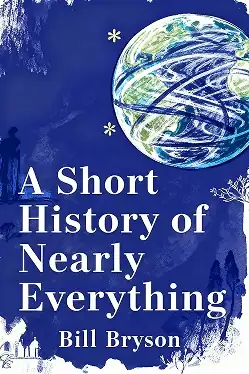A Short History of Nearly Everything by Bill Bryson

Overview of A Short History of Nearly Everything
Bill Bryson's award-winning journey from Big Bang to humanity makes complex science irresistibly entertaining. Winning the 10,000 Aventis Prize (which he donated to charity), this bestseller transformed science education worldwide. What cosmic secrets could change your understanding of everything?
About its author - Bill Bryson
William McGuire Bryson, the bestselling author of A Short History of Nearly Everything, is a celebrated American-British writer renowned for transforming complex scientific and historical topics into engaging, accessible narratives. Born in Des Moines, Iowa, in 1951, Bryson first gained fame through his witty travel memoirs, including Notes from a Small Island and A Walk in the Woods—the latter adapted into a 2015 film starring Robert Redford.
His transition to science writing with A Short History of Nearly Everything (2003) stemmed from a desire to understand foundational scientific concepts, blending meticulous research with his trademark humor.
Bryson’s works span genres from language studies (The Mother Tongue) to cultural exploration (At Home: A Short History of Private Life), earning accolades like the prestigious Aventis Prize for science writing. A dual citizen and former chancellor of Durham University, he was awarded an honorary OBE for contributions to literature. A Short History of Nearly Everything has sold over 16 million copies worldwide, translated into 35 languages, and remains a cornerstone of popular science literature.
Key Takeaways of A Short History of Nearly Everything
- How the Big Bang created 98% of universal matter in three minutes
- Bill Bryson reveals how 99.99% of Earth's species went extinct
- Why quantum theory shattered 19th-century science's confidence in complete knowledge
- How Henrietta Leavitt's "standard candles" measured galactic distances despite sexist barriers
- The improbable chain of cosmic luck enabling human existence against astronomical odds
- Why Einstein's relativity proved space and time are observer-dependent illusions
- How atmospheric lead and CFCs threatened Earth's radiation defenses unseen
- What dinosaur fossil gaps reveal about life's fragility across geological eras
- Why 1900s scientists wrongly believed physics had no remaining mysteries
- How Rutherford's atomic model exposed vast emptiness within matter's core
- Bill Bryson traces science's brutal rivalries behind breakthroughs like quantum leaps
- Why Earth's 4-billion-year age was deduced from meteorite dating techniques

























